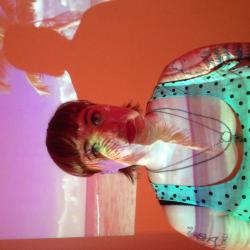Enjoying the semi-solitude of Fossvogur Cemetery
There are few places one can go to be at once surrounded by people and also left entirely undisturbed. If one doesn’t mind that the people you’re surrounded by are not alive, then a cemetery is top of that list. Reykjavík’s oldest and most centrally located cemetery Hólavallagarður has become widely known as a must-visit spot for those who enjoy the tranquil beauty and history of graveyards. However, aficionados of the churchyard excursion should not miss the sweeping majesty of the Fossvogskirkjugarður, the Fossvogur Cemetery.
Being someone who is more inclined to spend time among the dead than the living, I have made this sepulchral ground one of my preferred walking destinations over my years living in Iceland. I’ve spent a fair amount of social time in cemeteries since I was young, although neither as mourner nor guest, and I simply gravitate to hallowed gardens whose concrete monuments fulfill the profound human urge to not be forgotten.
Lying along the southeastern slope of Öskjuhlíð, the cemetery attached to Fossvogur Church is an expansive and meticulously manicured home for the post-animate residents of our fair city. First consecrated in 1932, Fossvogur Cemetery was inaugurated in response to the need for more burial grounds as the population grew, which death inevitably goes hand-in-hand with.
The first burials were Gunnar Hinriksson (aged 87), who is considered the guardian of the park, and Ólafur Þorkelsson (aged 7). It was considered symbolic for the first burials to represent the oldest and youngest generations, and their tandem burials were attended by a huge procession from downtown Reykjavík up to the hill. Today, the burial grounds are fully utilised or reserved, but there is also a grove for casting ashes and a ground for urns.
One arrives to the cemetery via the pathway to the church and crematorium (the only one in Iceland). From there, one can stroll on foot and explore the gardens respectfully. A well delineated map at the edge of the parking lot directs one to the burial quadrants and various monuments throughout, giving ease to those finding whom they wish to grieve and others who find interest in the historical nature of the premises.
With many similarities to its downtown cousin in terms of spiritual atmosphere, the grounds are notably very open and spacious, with wide paths and scenic vistas over the valley and to the sea. There is also considerable difference in the style of headstones and tone of the epitaphs, which are here more modern, diverse and multicultural. Many important monuments adorn the grounds with solemnity, such as sculptor Einar Jónsson’s memorial to the 1951 Glitfaxi air crash, the Russian-gifted Hope for Peace statue, and the striking obelisk dedicated to Norwegian soldiers.
Throughout my many visits, I’ve surmised that the local love-language of grief is acts of service. On my first visit to the Fossvogur Cemetery over a decade ago, on a late summer evening stroll with friends who wanted to visit a loved one, I noticed how well these sites were maintained. Many graves were illuminated by LED votives and were beautifully gardened and groomed by the families.
On my most recent visit, as in many others, I crossed several fresh graves with dirt still mounded high and lavishly adorned with wreaths, banners, flowers and flags. Even very old graves where one would seemingly have no leftover mourners, such as in the burial grounds of British, American and Canadian servicemen from WWII, were adorned with flags, flowers and stones.
I always find myself nearly alone on my strolls, save for the departed, but when meeting another living soul there is an unspoken agreement to respectfully acknowledge each other and move along. With no deceased loved-ones of my own to visit, I’ve formed a parasocial relationship with one resident of the Canadian field, H. Steinberg, who is always good company for a moment of contemplation and coffee-sipping.
While it is a somber environment where one shouldn’t go mucking about — even my goth ass wouldn’t have a full-on picnic here, like I would in my hometown — it’s a truly lovely place to enjoy a laconic excursion and remember historical losses. As one epitaph reads, it is peace. Perfect peace.
Buy subscriptions, t-shirts and more from our shop right here!















